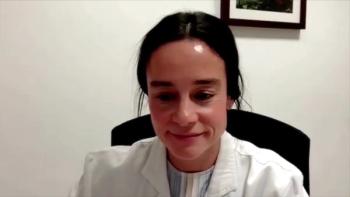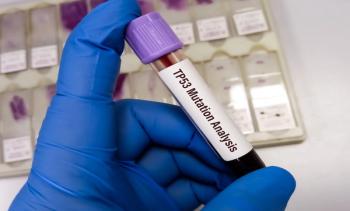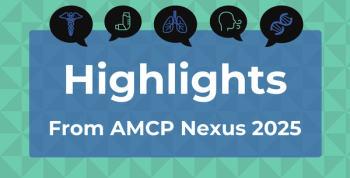
Studies With a PI-Based Quadruplet Regimen and Sequencing
The panelist describes the PI-based quadruplet regimen studies. He also discusses the practical sequencing of investigational treatment strategies with the current standard of care.
Transcript
Ajai Chari, MD: Regarding the Cassiopeia study, what’s interesting about this study is we’ve had a lot of daratumumab studies that have shown benefit in the relapsed setting. In the newly diagnosed setting, we have the ALCYONE study showing daratumumab plus VMP [bortezomib, melphalan, prednisone] was superior to VMP; and also the MAIA study with DRd [daratumumab, lenalidomide, dexamethasone] versus Rd [lenalidomide, dexamethasone]. But we never had a transplant-eligible population, and that’s the importance of Cassiopeia. This was bortezomib, thalidomide, and dexamethasone with or without daratumumab.
This was a European study that showed that the addition of daratumumab not only led to improved depth of response, but surprisingly—with only 18-month follow-up—but that depth of response already translated into a PFS [progression free survival] benefit. That’s the power of this study: it shows daratumumab even in the transplant-eligible population, even with transplant consolidation, was still able to demonstrate a PFS benefit. The main additional toxicity was a slight increased risk of infections, which has been seen in many daratumumab studies, but generally they have been lower grade. And grade 3/4 toxicities typically are more comparable between the experimental and control arms.
The GRIFFIN trial is the US version of the Cassiopeia, which is bortezomib, lenalidomide, and dexamethasone, or RVd, plus or minus daratumumab. This is, however, a randomized phase II trial, not a randomized phase III trial. The primary end point was stringent CR [complete response], and that was met and has been updated at this year’s ASH [American Society of Hematology] 2019 Annual Meeting & Exposition. It showed that the addition of daratumumab did increase the stringent CR rates at the prespecified cutoff and was statistically significant.
Of course, PFS data are being awaited, and additional follow-up will be needed. But this shows that the addition of daratumumab did lead to deepening of responses, and if one is an early adopter, one might consider adding daratumumab. If one is a late adopter, one would potentially wait. But the fact that the Cassiopeia study showed that improvement is encouraging. Again, the safety signal was mainly the low-grade infections. Grade 3 toxicity was comparable in both arms. There was also a note about stem cell harvesting and collection. And so with the stem cells, the median stem cell collected was slightly lower with the addition of daratumumab and more patients required plerixafor. But otherwise, the ability to collect and engraftment times with transplant were comparable in both arms.
The MASTER trial was presented by Dr Luciano Costa. This basically is daratumumab—KRd [carfilzomib, lenalidomide, dexamethasone], and it’s induction therapy, transplant, consolidation therapy, and then eventually it goes to lenalidomide maintenance. What’s unique about this study is MRD [minimal residual disease] is being sampled repeatedly at each of these points: after induction therapy, after transplant, and after consolidation therapy. The study design is such that if patients attained 2 consecutive MRD-negativity time points, then the patient would then come off all treatment and be observed. Responses have been quite impressive, and so far those patients who are MRD negative have not yet relapsed, but we need additional follow-up. It’s particularly important because high-risk patients attaining MRD negativity at 1 time point may not be adequate, and we really do want to see how durable these MRD negativities are.
Dr Prashant Kapoor also presented a study with daratumumab in the frontline setting, and this was in combination with ixazomib, lenalidomide, and dexamethasone. This showed dramatic efficacy and tolerability. This is an easy-to-give regimen. I think 1 of the challenges of knowing how to use this is that if patients are coming in for daratumumab anyway, is there the benefit of having ixazomib at this point? One of the benefits of this regimen would be, as we alluded to, how we do these great randomized phase III studies that show that triplets are better than doublets; in the real world, patients aren’t getting treated for that long. Another way to use this is if somebody has gotten their initial induction therapy and now you’re trying to maintain them, it might be an opportunity off-label to switch them to ixazomib for the convenience.
When we think about sequencing and this 3-drug-versus-4-drug question, to me it harks back to the era of bortezomib and lenalidomide and dexamethasone. If you go back a decade, there was the same discussion. We have bortezomib-dexamethasone and lenalidomide-dexamethasone. Should we combine them? If we do, what is that going to do to patients? Will it get more resistant relapse? It goes back to our discussion earlier about this attrition and diminishing returns. It’s presumptuous to think that every newly diagnosed patient will get to that first relapse. No study that I’m aware of has shown that being aggressive or using your most potent regimen up front has compromised later outcomes.
If you’re an early adopter and you were using VRd [bortezomib, lenalidomide, dexamethasone] for the last decade, then between Cassiopeia and GRIFFIN, the data are quite compelling for the addition of daratumumab to the frontline. These are both randomized studies, and DVTd [daratumumab, bortezomib, thalidomide, dexamethasone] has already resulted in a PFS benefit. DVRd [daratumumab bortezomib, lenalidomide, dexamethasone] has already resulted in a stringent CR depth. Admittedly, these are surrogate end points. But when you have a newly diagnosed population, you’re going to have to wait a long time for PFS to read out, especially when you’re using a VRd regimen, which we know is a very potent regimen. If the control arm is VRd, transplant, and lenalidomide maintenance, relapses won’t occur for a while. This is really where we need the surrogate depth of response. If you’re an early adopter, the quadruplet regimens are clearly declaring themselves as the winner and the contender to beat.
One caveat I would make is that, and this gets into the sequencing, just because you start with 4 drugs doesn’t mean you’re maintaining 4 drugs. And I don’t think it’s possible from a patient perspective and a societal and fiscal perspective to maintain everybody on quadruplet therapies forever. We have to be thoughtful of the duration of these treatment regimens and perhaps de-escalate to something that is more tolerable and sustainable. For example, if the patient has translocation (4;14), maybe maintain the PI [proteasome inhibitor] with daratumumab. If they don’t have translocation (4;14), maybe maintain the IMiD [immunomodulatory imide drug] with daratumumab, so they can basically come in once a month in their maintenance period. Those are strategies to get around it, but my prediction is that the quadruplet therapies will be the default standard of care in the future.
In terms of the role of IMiD-free induction treatments, we’ve discussed that in the frontline studies, both the FORTE study and the IFM [L’Intergroupe Francophone du Myélome] study—FORTE comparing KRd with KCd [carfilzomib, cyclophosphamide, dexamethasone] and the IFM study comparing VTd [bortezomib, thalidomide, dexamethasone] with VCd [bortezomib, cyclophosphamide, dexamethasone]—showed that the IMiD partner was better compared with the non-IMiD cyclophosphamide-containing regimen with respect to response rate and PFS. The problem, however, is that 1 size does not fit all, and clearly there will be patients for whom IMiDs may not be appropriate. Those might be patients who are intolerant. They have angioedema. They have, despite dose reductions, adverse effects that are not manageable, although that’s quite uncommon. For whatever reason, if a patient is IMiD intolerant, cyclophosphamide is another option.
The LYRA study, presented by Dr Robert Rifkin at ASH 2019 meeting, shows the addition of daratumumab to CyBorD, which is bortezomib, cyclophosphamide, and dexamethasone. This was also very efficacious, and the addition of daratumumab appeared to deepen responses. So it’s an option. The other way one might use this is, let’s say there’s that first cycle of treatment, where the IMiD hasn’t been delivered yet. Or the patient is admitted, but they have renal failure and you don’t know what lenalidomide dose you’re going to end up on. If our regimens are so good, the renal function at the newly diagnosed stage may not be the eventual renal function after a month of treatment. In that setting, that might be another off-label use of daratumumab with CyBorD [bortezomib, cyclophosphamide, dexamethasone], and then transitioning them back to an IMiD once their renal function is better and the IMiD has been delivered.
Newsletter
Stay ahead of policy, cost, and value—subscribe to AJMC for expert insights at the intersection of clinical care and health economics.







































